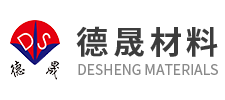Tricine modified chitosan hydrogel: opening a new era in the field of biomedicine
Release time:
2025-10-17
1、 The Encounter between Natural Polysaccharides and Biological Buffers
In the field of biomedicine, chitosan is highly favored due to its natural origin, excellent biocompatibility, and biodegradability. However, the mechanical properties and poor adhesion of traditional chitosan materials have always constrained their application in the medical field. In recent years, a biological buffer called Tricine (trihydroxymethylglycine) has successfully solved this problem by innovatively combining with chitosan.

Tricine, as a zwitterionic buffer, has structural characteristics similar to Tris, but exhibits milder properties under high concentration conditions. Its chemical structure enables it to form a stable hydrogen bond network with chitosan, thereby significantly improving the mechanical properties and adhesive strength of hydrogels. This innovative combination not only preserves the biological safety of the material, but also endows it with a new dimension of performance.
2、 Technological breakthrough in Tricine modification
Traditional chitosan modification often requires the addition of chemical crosslinking agents, which not only increases the complexity of the process but may also affect the biocompatibility of the material. And Tricine modification technology has achieved breakthroughs through the following methods:
Firstly, under mild reaction conditions, the active groups of Tricine interact specifically with the functional groups on the chitosan molecular chain. This interaction mainly relies on hydrogen bonding to form, avoiding the material performance degradation that may be caused by strengthening chemical bonds. Secondly, Tricine molecules are evenly distributed in the chitosan network, forming a stable three-dimensional cross-linked structure, which enables the hydrogel to have excellent mechanical strength and adhesion properties at the same time.
3、 Analysis of the advantages of innovative preparation processes
The preparation process of Tricine modified chitosan hydrogel only needs three key steps: the dissolution and activation of chitosan, the Tricine modification reaction and the final hydrogel molding. This concise process has multiple advantages.
From a production perspective, the reaction conditions are mild (at room temperature and pressure), time-consuming (usually completed within a few hours), and the utilization rate of raw materials is high, greatly reducing production costs. From the perspective of product performance, due to avoiding harsh conditions such as high temperature and high pressure, the molecular structure of the final product is more complete and the performance is more stable. From an application perspective, this process has strong controllability and is easy to adjust product performance parameters according to different application requirements. It is worth mentioning that there is no need to use any toxic crosslinking agents during the entire process, which gives the product an inherent advantage in the medical field.
5、 Desheng New Materials: Tricine Professional Manufacturer
As a professional manufacturer of biological buffering agents in China, Desheng New Materials has been dedicated to the research and production of Tricine and other biological buffering agents for many years. The company adopts advanced production technology and has established a strict quality control system to ensure that each batch of Tricine products has a purity of over 99.5%, extremely low endotoxin content, and small differences between batches. The company also provides professional technical support services to help customers optimize the use of Tricine in various application scenarios.
Contact details
Contact number
Address: C8, Guanggu United Science and Technology City, Ezhou City, Hubei Province
Fax:0711-3704 589
Follow us



